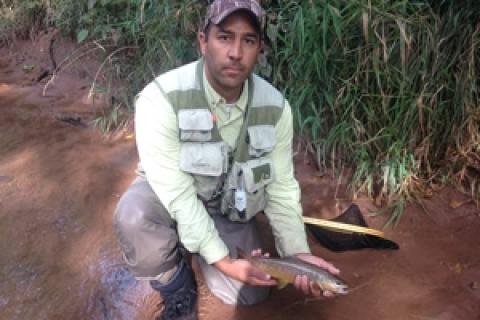
 The one good thing about your favorite river or stream becoming overgrown is that this lush canopy provides excellent cover for hungry trout. Tag alders, cedars and even grass if low enough to the water can turn an exposed riffle in to a predator's paradise. For trout fisherman understanding the change in conditions from a fish's point of view can be the difference between a very good day and an average one.
The one good thing about your favorite river or stream becoming overgrown is that this lush canopy provides excellent cover for hungry trout. Tag alders, cedars and even grass if low enough to the water can turn an exposed riffle in to a predator's paradise. For trout fisherman understanding the change in conditions from a fish's point of view can be the difference between a very good day and an average one.
A good place for anglers to start when thinking of fishing the green on the river is getting to the river early. Trout will move out of concealed hiding spots in low light conditions (early morning or night) to feed and will hang around under these overgrown areas as long as the sunshine does not penetrate. In the upper Midwest the fishing is best until about 11 a.m. on clear sunny days and stays good almost all day in overcast conditions. The best spots to target are overgrown undercut banks or submerged wood. Both of these spots can normally hold fish but with the added top cover trout seem more apt to strike and strike hard.
Fishing these types of spots takes a bit of confidence. Ideally you want your fly or spinner as far under the cover as you can get it. If you are doing things right you will not be able to see your fly or spinner as you retrieve it. As you fish this cover don't set the hook on every little tap or bump you feel. You will rub sticks or structure as you work your baits under the heavy cover, but wait to feel the weight before setting up. This way you will allow tentative or light biting fish as much opportunity as possible to take your baits.
Using a stout leader line is good idea when fishing these types of overgrown conditions. Fish bite hard and many times you will have to work the fish quickly out of the heavy cover to avoid becoming entangled. Fishing the green on the river can be a productive way to catch trout in a few spots that you haven't concentrated on before.
- 2566 views

